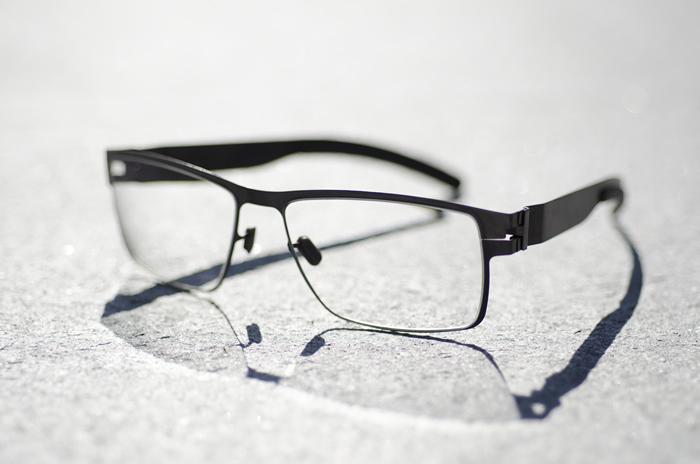Welcome to the realm of “non-prescription glasses in Kenya,” where fashion and functionality harmoniously unite. Also known as “Plano” or “zero-power” glasses, these eyewear options cater to individuals who don’t need vision correction.
Kenyans don these trendy accessories for various purposes, from adding flair to outfits to safeguarding against sunlight or digital screen-emitted blue light. Join us as we delve into the essential factors for choosing non-prescription glasses in Kenya and the most sought-after brands, ensuring both style enhancement and eye protection.
Factors to Consider When Choosing Non-Prescription Glasses in Kenya
When it comes to non-prescription glasses, choosing the right lens and frame material is essential for both comfort and functionality. In Kenya, there are various options available, each with its own advantages and disadvantages. Here are the factors to consider when choosing non-prescription glasses in Kenya:
1. The Lens Material
Plastic Lenses: Plastic lenses are the most common lens material used for non-prescription glasses. They are lightweight, durable, and affordable. They are also available in various colors and tints, making them a popular choice for fashion purposes. However, plastic lenses are not as impact-resistant as other materials, making them unsuitable for sports or high-risk activities.
Polycarbonate Lenses: Polycarbonate lenses are the most impact-resistant lens material available for non-prescription glasses. They are lightweight and durable, making them an excellent choice for sports or outdoor activities. They also offer built-in UV protection, making them suitable for outdoor use. However, polycarbonate lenses are more expensive than plastic lenses and can be prone to scratches.
High-Index Lenses: High-index lenses are designed for people with high prescriptions. They are thinner and lighter than traditional plastic lenses, making them more comfortable to wear. They also offer better vision clarity than plastic lenses. However, they are more expensive than plastic lenses and may not be suitable for people with low prescriptions.
2. The Frame Material
Metal Frames: Metal frames, such as titanium or stainless steel, are lightweight and durable. They are also hypoallergenic, making them a suitable choice for people with sensitive skin. Metal frames offer a sleek and modern look, making them a popular choice for fashion purposes. However, metal frames can be more expensive than other materials, and they may not be as flexible as plastic frames.
Plastic Frames: Plastic frames, such as acetate or nylon, are affordable and available in various colors and styles. They are also flexible and lightweight, making them comfortable to wear for long periods. Plastic frames are a popular choice for fashion purposes, but they may not be as durable as metal frames.
Acetate Frames: Acetate frames are a type of plastic frame made from cotton fibers and plasticizers. They are lightweight and offer a wide range of colors and patterns, making them a popular choice for fashion purposes. Acetate frames are also hypoallergenic, making them a suitable choice for people with sensitive skin. However, acetate frames may not be as durable as metal frames.

3. Lens Coatings
In addition to lens material, lens coatings can enhance the functionality and durability of non-prescription glasses. Here are the different lens coatings available for non-prescription glasses in Kenya:
Anti-Reflective Coating: Anti-reflective coating reduces glare and reflection on the surface of the lenses, making them more comfortable to wear and improving visual clarity. This coating is especially useful for people who spend a lot of time in front of screens or under bright lights. However, anti-reflective coatings can be more expensive than other coatings and may require special care to avoid scratches.
Scratch-Resistant Coating: Scratch-resistant coating protects the lenses from scratches and damage caused by everyday wear and tear. This coating is especially useful for people who are rough on their glasses or work in environments where their glasses are likely to get scratched. However, scratch-resistant coatings may not be completely scratch-proof, and they can be more expensive than other coatings.
UV Protection Coating: UV protection coating blocks harmful UV rays from the sun, reducing the risk of eye damage and conditions such as cataracts and macular degeneration. This coating is especially useful for people who spend a lot of time outdoors or in bright environments. However, not all non-prescription glasses come with UV protection, so it’s important to check before purchasing.
4. Frame Style
Frame style not only affects the appearance of non-prescription glasses but also their functionality and comfort. Here are the different frame styles available for non-prescription glasses in Kenya:
Full-Rim Frames: Full-rim frames completely encircle the lenses, providing the most durability and support. They are suitable for people who need glasses for everyday wear or high-risk activities. However, full-rim frames can be heavier and less comfortable than other styles.
Semi-Rimless Frames: Semi-rimless frames only partially encircle the lenses, providing a more lightweight and stylish option. They are suitable for people who want a balance of durability and fashion. However, semi-rimless frames may not be as sturdy as full-rim frames and can be more expensive.
Rimless Frames: Rimless frames have no frame around the lenses, providing the most minimalist and lightweight option. They are suitable for people who want a fashionable and comfortable option. However, rimless frames may be less durable and require special care to avoid damage.
5. Fit and Comfort
Proper fit and comfort are crucial factors to consider when choosing non-prescription glasses. Ill-fitting glasses can cause discomfort, and headaches, and even lead to vision problems. Here’s what you need to know about ensuring a proper fit and maximum comfort with your non-prescription glasses.
Measuring for Proper Fit: It’s important to get the right fit for your glasses to ensure maximum comfort and performance. You’ll need to measure the distance between your pupils (PD), as this will determine where the optical centers of the lenses should be placed. This measurement can be done by an optician, or you can do it yourself using a ruler and a mirror. Additionally, the frame size should match the size of your face, with the top of the frames following your brow line and the bottom sitting just above your cheekbones.
Selecting the Right Nose Pads: Nose pads play a significant role in the comfort and fit of non-prescription glasses. The material and size of the nose pads can affect how the glasses sit on your nose, with options ranging from silicone to foam to adjustable pads. If the nose pads are too small or too large, they can cause discomfort or even leave marks on your skin.
Choosing the Right Temple Tips: Temple tips, the end of the arms that rest behind your ears, also play a role in comfort. The tips should fit snugly behind your ears without causing pressure or discomfort. Many non-prescription glasses offer adjustable tips or materials that provide a comfortable grip.
Trying on Glasses before Buying: It’s essential to try on glasses before buying to ensure a proper fit and maximum comfort. Some glasses may look great but feel uncomfortable when worn for an extended period. Trying on glasses allows you to feel the weight, balance, and fit on your face before making a purchase.


Leave a comment